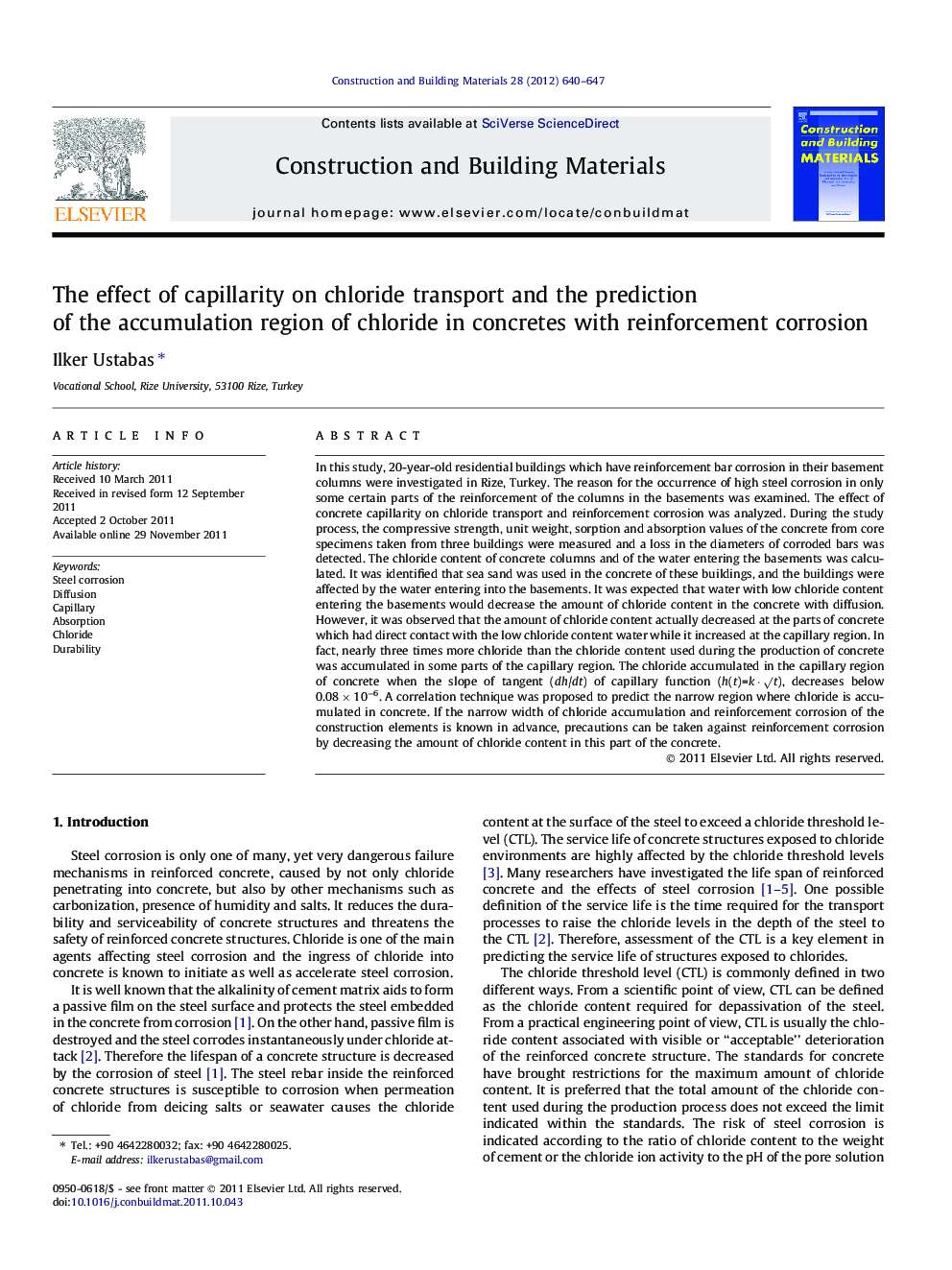| Article ID | Journal | Published Year | Pages | File Type |
|---|---|---|---|---|
| 259620 | Construction and Building Materials | 2012 | 8 Pages |
In this study, 20-year-old residential buildings which have reinforcement bar corrosion in their basement columns were investigated in Rize, Turkey. The reason for the occurrence of high steel corrosion in only some certain parts of the reinforcement of the columns in the basements was examined. The effect of concrete capillarity on chloride transport and reinforcement corrosion was analyzed. During the study process, the compressive strength, unit weight, sorption and absorption values of the concrete from core specimens taken from three buildings were measured and a loss in the diameters of corroded bars was detected. The chloride content of concrete columns and of the water entering the basements was calculated. It was identified that sea sand was used in the concrete of these buildings, and the buildings were affected by the water entering into the basements. It was expected that water with low chloride content entering the basements would decrease the amount of chloride content in the concrete with diffusion. However, it was observed that the amount of chloride content actually decreased at the parts of concrete which had direct contact with the low chloride content water while it increased at the capillary region. In fact, nearly three times more chloride than the chloride content used during the production of concrete was accumulated in some parts of the capillary region. The chloride accumulated in the capillary region of concrete when the slope of tangent (dh/dt) of capillary function (h(t)=k ⋅ √t), decreases below 0.08 × 10−6. A correlation technique was proposed to predict the narrow region where chloride is accumulated in concrete. If the narrow width of chloride accumulation and reinforcement corrosion of the construction elements is known in advance, precautions can be taken against reinforcement corrosion by decreasing the amount of chloride content in this part of the concrete.
► I investigated the relationship of chloride content and steel corrosion. ► The effect of concrete capillarity on chloride transport. ► Chloride content increased at the capillary region and decreased at the parts of concrete. ► It was predicted that the chloride accumulated in the capillary region of concrete.
